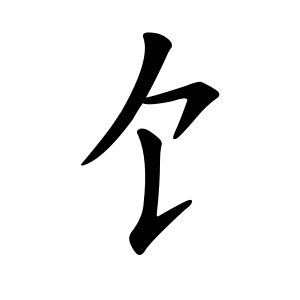Radical 184 on:
[Wikipedia]
[Google]
[Amazon]

 Radical 184 or radical eat () meaning "
Radical 184 or radical eat () meaning "
File:食-oracle.svg, Oracle bone script character
File:食-bronze.svg, Bronze script character
File:食-bigseal.svg, Large seal script character
File:食-seal.svg, Small seal script character
Unihan Database - U+98DF
{{Simplified Chinese radicals

 Radical 184 or radical eat () meaning "
Radical 184 or radical eat () meaning "eat
Eating (also known as consuming) is the ingestion of food, typically to provide a heterotrophic organism with energy and to allow for growth. Animals and other heterotrophs must eat in order to survive — carnivores eat other animals, herbi ...
" or "food
Food is any substance consumed by an organism for nutritional support. Food is usually of plant, animal, or fungal origin, and contains essential nutrients, such as carbohydrates, fats, proteins, vitamins, or minerals. The substance is ...
" is one of the 11 Kangxi radicals (214 radicals in total) composed of 9 strokes.
In the '' Kangxi Dictionary'', there are 403 characters (out of 49,030) to be found under this radical.
is also the 185th indexing component in the '' Table of Indexing Chinese Character Components'' predominantly adopted by Simplified Chinese dictionaries published in mainland China
"Mainland China" is a geopolitical term defined as the territory governed by the People's Republic of China (including islands like Hainan or Chongming), excluding dependent territories of the PRC, and other territories within Greater Chin ...
, with the simplified left component form and its traditional form listed as its associated indexing components.
Evolution
Derived characters
Variant forms
This radical character has different forms in different languages when used as an individual character and as a component. Traditionally, when used as an individual character, its third stroke is printed as either a horizontal line () or a vertical line (), but more often written as a slanted dot (); when used as a left component, it is usually printed as and written as in regular script. In China, '' xin zixing'' adopted the handwritten form and and applies it also to printing typefaces. This change is applied chiefly to Traditional Chinese publications in mainland China; the left component form was already replaced by the simplified form prior to the printing typeface reform. Taiwan's Standard Form of National Characters and Hong Kong's List of Graphemes of Commonly-Used Chinese Characters use and (the third stroke is horizontal) as the standard forms, while other alternative forms (e.g. /𩙿, /) are still rather prevalent in publishing. In modern Japanese, (third stroke is horizontal) and are seen as the traditional/orthodox forms. The ''shinjitai
are the simplified forms of kanji used in Japan since the promulgation of the Tōyō Kanji List in 1946. Some of the new forms found in ''shinjitai'' are also found in Simplified Chinese characters, but ''shinjitai'' is generally not as extensi ...
'' reform changed the third stroke in as an individual character or as a non-left component to a short horizontal line (); changed the left component form to . In principle, these changes apply only to '' jōyō kanji'' (more specifically, ''jōyō kanji'' before 2010 revision; some characters added in 2010 were not simplified); the traditional form is used for '' hyōgai kanji''.
Literature
*External links
Unihan Database - U+98DF
{{Simplified Chinese radicals
184
__NOTOC__
Year 184 ( CLXXXIV) was a leap year starting on Wednesday (link will display the full calendar) of the Julian calendar. At the time, it was known as the Year of the Consulship of Eggius and Aelianus (or, less frequently, year 937 ''Ab ...
185
Year 185 ( CLXXXV) was a common year starting on Friday (link will display the full calendar) of the Julian calendar. At the time, it was known as the Year of the Consulship of Lascivius and Atilius (or, less frequently, year 938 '' Ab urbe co ...